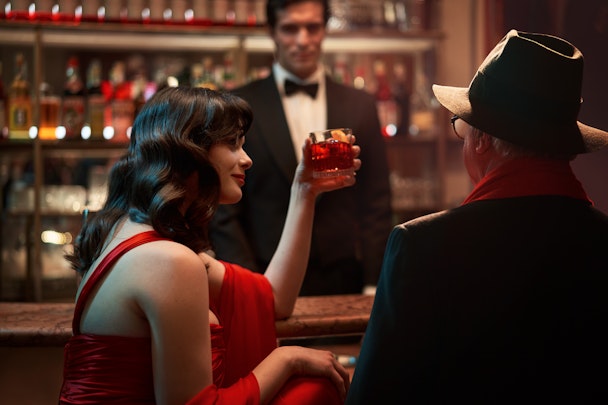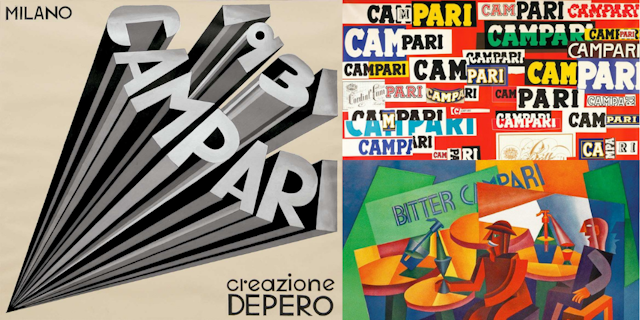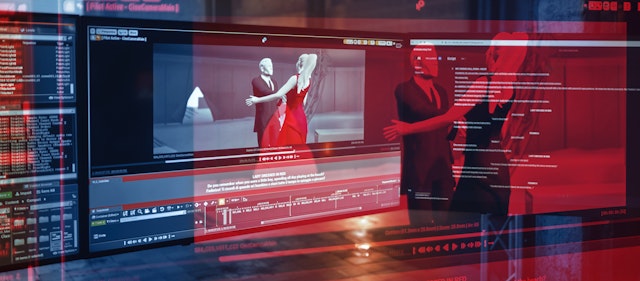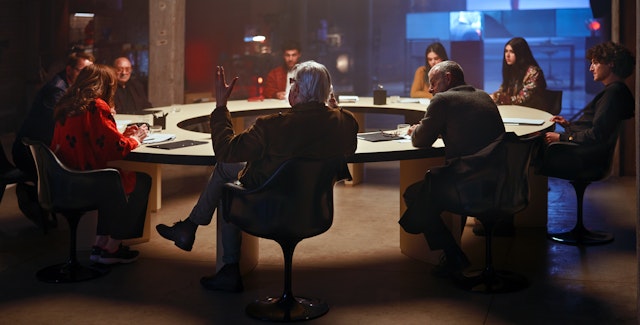How Campari’s ambitious AI Fellini film fosters its artistic spirit
A drinks brand that pushed the boundaries of art, since 1860 Campari has worked closely with artists and directors, who each helped define the drink’s artistic identity. A cocktail of two iconic Italian exports, Federico Fellini and Campari, its latest project emulates the work of the cinema pioneer using artificial intelligence while exploring the future of cinema and creativity.

The short film, set in the heart of Rome, explores Fellini’s life and dreams
The Futurist’s favorite tipple in 30s-era Italy and the ‘in drink’ of Andy Warhol’s Pop Art circle, it’s hard to name a drink that is cooler than the intoxicating spirit with an attractive hue, Campari.
With a brand story linked to Milan’s art and cultural history, the seductively red apéritif has always had an artistic spirit, working throughout its history with contemporary artists, directors and designers to show its brand is of its time.

“Since its origins, Campari has worked with artists of its times – decade after decade, it moved from artistic medium to artistic medium,” explains Anita Todesco, curator of Galleria Campari – an interactive space at the brand’s headquarters that houses posters, drawings, sketches and artists’ books from the brand’s history. “The history of art and art has always been part of the brand’s DNA.”
Today, artists still play a pivotal role in shaping the Italian aperitif’s global presence, with creative license to define the drink’s artistic identity. In 2017, it launched the ‘Red Diaries’, an ongoing short film series devised to illustrate that every cocktail tells a story.
“It was launched to build on the brand’s legacy in the cinema world,” explains Todesco. “The idea behind the project is to work with world-class talent, from award-winning directors to famous actors, to produce iconic short movies not just as a means of communication but as art pieces.”
Like art, Todesco explains how ingrained cinema is in Campari’s brand DNA. “In the 20s and 30s, Campari used portraits of silent movie stars in its posters, associating them with the brand. Then it started creating short movies in a typical Italian format called the ‘Caroselli’ in the 60s and 70s,” she says. “They were TV commercials slash short movies that were broadcast to TV. Campari was very active in those years producing them. Cinema is something we’ve been constantly exploring and the Red Diaries is an important evolution of that.”
Since the Red Diaries began, Campari has worked with the likes of actors Clive Owen, Zoe Saldana and Ana de Armas on films directed by Paolo Sorrentino, Stefano Sollima and Matteo Garrone. But never has it ever worked with an award-winning director who’s no longer with us – until now.
Campari’s relationship with cinema pioneer Federico Fellini began back in 1984 when he directed ‘In Just One Minute’, a TV commercial that offered a brief one-minute window into a train journey. In Fellini’s dreamlike style, it made references to the neurosis of TV, insulating people are disparaging the miraculous gifts of nature and history.
“Fellini was a master of fantasy. He was picked because the director had already created many masterpieces that had expressed the capacity of cinema as an artistic means,” Todesco explains. “He kept viewers suspended between reality and dream to maximize fantastical worlds.”
As Campari already has a relationship with the maestro, and approaching the 100-year anniversary of his birth, Todesco says that the team thought the cinema pioneer would be the perfect fit for the next Red Diaries short film. Little did they know everyone was about to enter a global pandemic, which meant celebrations would have to be postponed.

Beyond the pandemic getting in the way of plans, Campari had to figure out how to emulate the work of Fellini using artificial intelligence (AI). But Todesco explains the challenge actually presented an opportunity for the brand to show it was “of its time”.
Using contemporary innovative techniques and technologies, she says: “The idea is to bring the Red Diaries project to a new level. To do something more complex, the role of AI was not only just a mere exploration of technology but to take an active role.”

Directed by Maximilian Niemann, to help them define what could or could not be perceived as ‘Felliniesque’ the team quizzed original members of Fellini’s crew, who provided key insights on the maestro’s oeuvre. A collaboration between human and AI, the project showcases how the sentimental and the rational, the emotional and the data-driven can come together to create a brand-new piece of art.
“It was a combination of existing and new technologies and tools brought together to produce a short film. AI was used to analyze Fellini’s movies and scripts to extract data that help establish shot type and camera movements, dialogue, style and facial emotion,” Todesco explains. “Data collected was used to generate suggestions for the script and pre-visualization of scenes. And this was fundamental for the creation of the short film. AI was integral to production.”
The end result is a short film, set in the heart of Rome, exploring Fellini’s life and dreams that will premier at the Venice Film Festival in September. Ahead of that, Campri has brought out a short documentary directed by ZCDC.
“If we consider AI as a bit of dream, Fellini would have appreciated it as a creative process. It can encourage creativity and fantasy,” replies Todesco, when asked what the creative maestro would have made of AI. “It’s something more than a machine, it’s a way to inspire.”

